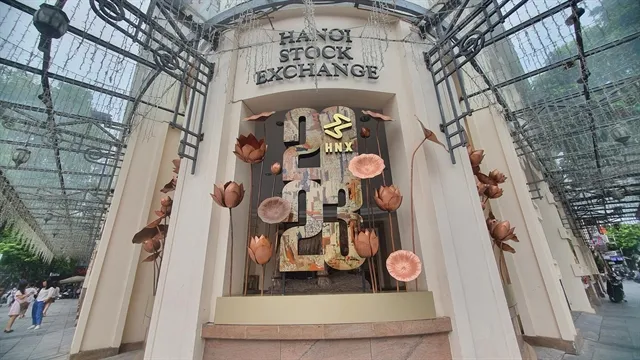
Amid these uncertainties, several securities firms and international organizations have forecasted that the State Bank may indeed opt for another round of interest rate cuts in the third quarter or towards the end of the year.
The Interest Rate Conundrum
The reduction in operating interest rates and the ceiling on savings interest rates from the end of the first quarter to mid-June this year initiated a downward trajectory for the local currency against the US dollar. At one point in August, the State Bank even pushed the selling price of the USD to 25,025 VND/USD, with commercial banks following suit with rates exceeding 24,000 VND/USD. The peak in late August saw rates surpassing VND 24,100 for USD 1 before settling down in early September. As of the end of last week, Vietcombank's USD buying rate stood at approximately VND 23,870, and its selling rate was VND 24,240.
While the exchange rate increase from the end of 2022 has been modest, about 1.8%, it has risen by approximately 2.68% compared to the lowest point in mid-January 2023. This upward trend, though not dramatic, can be attributed to domestic interest rate reductions, while the US Federal Reserve (Fed) and global markets have continued to signal rising interest rates, maintaining high USD rates to curb inflation.
Most forecasts regarding the domestic currency's price range by securities companies and international organizations do not indicate significant disturbances. Several factors, such as a substantial trade surplus, robust foreign direct investment (FDI) disbursements, and growing international tourism, help Vietnam manage exchange rate pressures. However, the ongoing trend of rising exchange rates and the potential for the USD to remain at elevated levels, even without further Fed interest rate hikes, pose questions about the State Bank's ability to continue reducing interest rates.
According to State Bank data, as of the end of July, credit growth was only about 4.56% compared to the beginning of the year, with June ending at 4.73%. In essence, credit growth turned negative in July, significantly lagging behind the same period last year when it was at 9.54%. The recent aggressive interest rate cuts have failed to substantially boost credit growth. Hence, the reduction of input interest rates may be of lesser importance compared to cutting output (loan) interest rates, and this decision could involve trade-offs with other associated risks. The economy's difficulty in absorbing capital and businesses facing challenges in securing loans due to eligibility issues are key factors. These problems cannot be resolved solely through interest rate adjustments.
Continuously lowering interest rates to maintain a low rate environment while grappling with excess liquidity may lead to the undesirable consequence of asset bubbles. Moreover, the interest rate spread between the dollar and the Vietnamese dong in the interbank market is widening. As the year ends and demand for USD rises, these are trade-offs that must be taken into account if the policy of reducing input interest rates persists. In theory, the greater the exchange rate pressure, the narrower the room for interest rate cuts. While some forecasts suggest that another interest rate cut may be on the horizon, it is ultimately the State Bank's policy decision that will hold sway.
The Variable of Oil Prices
Early in September, gasoline prices in Vietnam saw their fifth consecutive upward adjustment since the beginning of the year. Compared to the end of 2022, E5 gasoline prices had risen by 17.5%, while RON95 gasoline prices had surged by 20.1%. Economic data for August showed that the country's gasoline and rice prices were tracking global price increases, contributing significantly to the Consumer Price Index (CPI) for the month, which rose by 0.88% compared to the previous month. In comparison to December 2022, the August CPI was up by 2.02%, and year-on-year, it had climbed by 2.96%. On average, over the first eight months of 2023, CPI increased by 3.1% compared to the same period the previous year, with core inflation rising by 4.57%.
Gasoline prices, influenced by global prices, present one of the most challenging aspects of inflation control. In early September, Brent oil prices exceeded USD 90 per barrel, marking a 25% increase from the lows of June, which were at approximately USD 72 per barrel. Domestic gasoline prices adjust upward about a month behind global oil prices. Increased supply from Russia and OPEC countries has pushed oil prices higher, and production cut commitments are set to continue until the end of 2023, indicating a continued upward trend or the maintenance of high global oil prices.
While keeping inflation within the target of below 4.5% for 2023 is entirely feasible, the volatile fluctuations in global oil prices further restrict the range of available interest rate policy options. The stock market is eagerly anticipating the possibility of further interest rate cuts because a lower interest rate environment is generally favorable for stocks. However, it's essential to remember that reducing interest rates is not solely meant to support the stock market; rather, it's aimed at stimulating economic growth. Thus, if lowering input interest rates fails to spur credit growth or boost capital absorption while introducing risks of macroeconomic imbalances, it may not be a prudent choice.




















